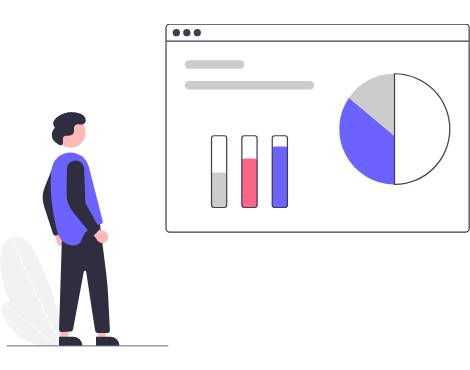In this article, we’ll show you how to go beyond a performance-based approach to evaluate call center productivity.
Part 1. Why the definition of productivity adopted in production does not work
Too often in call centers, the logic of production is used: colleagues measure the number of calls per hour or determine the percentage of agents busy. These calculations are based on the number of employees, while the Service level (SL) is not how hard your agents work. In his article “One Myth of Contact Center Productivity,” Daniel Ord, founder and director of OmniTouch International, writes: “If your team is focused on some Service Level (SL) metric, then at any given time, your agents are either busy processing a ticket or waiting new. In this way:
Productivity FormulaOccupancy (OCC) + Waiting = 100% of any piece of working time. |
If your employee’s Employment is 85% of any arbitrary period, then by default for the same period 15% of the time he is in standby mode. Let’s calculate, taking 1 working hour as an example: Employment: 85% X 60 min = 51 min. Waiting: 15% x 60 min = 9 min. A whole nine minutes of wasted time in every hour! “But those 9 minutes in every hour,” continues Daniel, “are broken into fragments: 25 seconds here, 1 minute there… and so on. Does it make sense to ask your employees to try to process other requests during these fragments? The correct answer is no. Waiting depends on the nature of the calls and the number of operators, and is not an unambiguous indicator of their effectiveness. A contact center is not a factory, so to measure productivity, use a set of metrics that does not include Occupancy (OCC) or Calls per hour/day/week.
Part 2: The right way to measure agent productivity
A set of metrics for evaluating productivity, proposed by Daniel Ord, looks like this:
- Adherence to schedule is the main metric. If operators strictly adhere to their work schedule, then the Service Level ( SL) will stabilize – and this is the main thing. In addition, Schedule Compliance is a metric that operators have a high degree of control over.
- Average call turnaround time (AHT) shouldn’t make a big difference to a call center’s overall productivity score – no more than 15% in the metrics bucket. But ANT is useful to show employees that this metric is there.
- Some call centers separately measure Additional time (auxiliary time, AUX – the time when the operator, regardless of the reason, cannot accept an incoming call). This is acceptable, but remember that AUX is part of another meaning – Keeping a schedule .
- Service level is not directly affected by operators. But some contact centers give it 5 to 8% of their basket of productivity metrics because they believe that if the Service Level target is met, then everything is going well, and if not, then something is wrong. But this “number” can only mean one thing – “we are all in the same boat.”
Important! Daniel Ord points out that the weight of each of these four metrics in call center productivity calculations will vary depending on the specialization of the call center. If we abstract, then for the average call center engaged in customer support, the following ratio is proposed: 80% – Compliance with the schedule; 10% – Average call processing time (AHT); 5% – Extra time (AUX); 5% – Service level (SL). Thus, an equation can be written to calculate agent productivity: Productivity = 0.8 (Scheduling) + 0.1 (AHT) + 0.05 (AUX) + 0.05 (SL). Daniel thinks this is the right approach for calls, face-to-face meetings, video chats, any contact that needs to meet a Service Level goal (an important caveat). It also applies to online chats, although some do not take into account the number of simultaneously processed chats, but this is easy to fix.
Part 3. About productivity measurement errors
Among the many metrics that are used to calculate agent productivity, there are some that can give a false impression of how hard individual team members are working. For example, Daniel Ord identifies the three most common mistakes of this kind:
1. The number of contacts processed in a given period of time.
You should not use this metric to calculate the productivity of a call center that is based on Service Level (SL). The likely reason for this is that many managers in our industry do not see the essential difference between Customer Service Level and Agent Response Time.
2. Employment.
The Occupancy Rate (OCC) is important to management as it indicates the intensity of resource use. But this is not the best indicator of productivity. Because in order to maintain a good Service Level, you will always need “reserve” operators. Also, if you want to avoid operator burnout, then Occ should not exceed 85-90%. OSS also shows how the work looks from the operator’s point of view. You can’t control it, but you have to know, budget, and take it seriously. At the same time, this is a difficult task and very few people cope with it.
3. Too high significance of the Average call processing time.
If operators consider AHT as their main indicator, they will most likely strive to serve as many customers as possible, neglecting the quality of work with each of them. Dave Appleby, resource management expert, also disagrees with using these three metrics to calculate productivity. He says that in such cases, “contact center managers act as ruthless taskmasters whose only task is to make employees work as hard as possible. Top management puts pressure on managers, managers in turn put pressure on supervisors, and supervisors are forced to demand more efficiency from operators. This gives the team the misconception that they are not performing well enough (even if they are working to their limits). And then the flow begins. As a result, the employer gets a reputation as a slave owner and legitimate problems with hiring staff.
Don’t confuse efficiency and productivity
Management generally considers productivity and efficiency to be one and the same. But these are fundamentally different indicators. In a broad sense, productivity is related to the volume of produced (services / goods / works), while efficiency is related to cost reduction. Naturally, in order to increase the efficiency of the contact center, you need to understand what it is.
Efficiency = Productivity + Quality
(Disclaimer: formula not to be taken literally) Productivity is a good measure of contact center performance, but quality is just as important, because efficiency is typically 50% productivity and 50% quality. At the same time, quality is not part of productivity, and these two indicators should be calculated independently of each other. As Daniel Ord says, “The decision on how to “mix” productivity and quality measures depends on the type of organization and goals. For example, if cost-effectiveness is in the first place, then such a call center will increase the importance of the Average Call Handling Time (AHT). And this is not bad and not good – it is a reflection of priorities. On the other hand, a quality-of-service call center may not consider AHT at all as it strives for maximum customer satisfaction . ” However, speaking of quality, its various metrics should not be used separately from each other. Feedback from customers, for example, should also be included in the calculations. Especially considering that about half of call centers evaluate only 2 to 4 calls per agent per month, which is clearly not enough to assess the quality of work. In order for the results to not be a lottery, you need to use more indicators. In addition, when you evaluate the quality of the call center as a whole, customer feedback can also show how high the overall level of productivity, i.e. how efficient your processes and technologies are. The operator can provide high-level support, but for example, a bad self-service scheme, having met on the way of the client, can let down the entire contact center. Remember that productivity doesn’t start and end with the operator. Above all, management must provide the right tools for the job and make the customer journey as smooth as possible. Mapping the customer journey is a useful tool for this.
Part 4. What to look for when calculating productivity
Readers and industry leaders shared insights with Call Center Helper magazine to help you measure contact center productivity.
Do not include Shrinkage in performance calculations
If Shrinkage is included in the performance metrics (Agent Occupancy and Number of Calls Handled), then the calculations will show that the team is less productive than it actually is. Let’s be clear: Shrinkage is the time spent on distractions – any activities, planned or not, that interfere with operators serving customers. For example, being late for work, holidays, sick days, trainings, seminars, team and individual meetings. It is better to exclude this from the productivity calculation formula altogether. Neris Corfield, director of Injection Consulting, says: “We need to broaden the concept of productivity. Is it possible, for example, to consider an internship or advanced training courses unproductive, i.e. a waste of time?”
Don’t add new metrics right away – make sure your team understands them
Paul, one of the readers, suggests measuring productivity by starting with basic KPIs that can be easily defined and calculated: “Once you get the hang of the basics, you can add additional metrics like conversion rates, customer reviews, calls per hour, etc. d.” Paul also draws attention to the importance of the team understanding the logic behind the measurements and making commitments from the participants. This is important because if employees think that their performance rating is based only on performance, they will chase the number of calls handled, and even use some tricks to end calls faster. For example, the operator may pretend not to hear the client so that he hangs up and calls back. The repeat call of the client will go to the next operator, and the “tricky” will be at the end of the queue after the supposedly accepted call.
Predict to increase productivity
At the level of personnel management and shift planning (WFM), the importance of accurate forecasting cannot be underestimated. There are excellent industry standards to ensure the accuracy of forecasts. Good forecasting = the foundation of contact center efficiency.
Reduce repetitive calls
A great source of efficiency gains is the reduction of unnecessary repetitive contacts. This is the strength of FCR (First Call Resolution) – the coefficient of solving the problem at the first call. Find and eliminate the causes of recurring calls – this way you will reduce their number and increase your FCR. How to do this, in our opinion, is best described in the book by Bill Price and David Jaffe: “The Best Service is No Service”.
conclusions
It is important to avoid measuring contact center metrics such as Occupancy and Number of calls handled per period – i.e. metrics based on the number of hits. It is better to focus on indicators that operators themselves can manage. Schedule adherence matters more than any other productivity metric you factor into your calculations. It is important to remember that productivity and efficiency are different concepts. When evaluating effectiveness, also consider quality indicators. But not in isolation, but in combination with feedback from customers. By following these simple tips, you will form the right idea about the productivity of your call center. Translation: Oki-Toki , source: callcentrehelper It ‘s easy to test our service, follow the link and register on the site. You can calculate the cost of using in your CC on the page with a calculator or ask us a question on whatsapp



